Hello and welcome!
It is with great joy that I note that this week we are marking Juneteenth, the day commemorating the end of slavery in the United States, as a federal holiday for the first time.
This is indeed an important moment for our country. Just as our other great national holidays are an occasion for Americans to pause and reflect on the events and ideas that led to their establishment, it is my hope that the annual commemoration of Juneteenth will be a moment for this and future generations to consider the evils of slavery and historical and ongoing racism that has afflicted our nation.
As I said in my Letter to the People of the Archdiocese of Boston on systemic racism, issued in June of last year, “Racism and slavery find a common nexus in this country, the denial of the humanity and dignity of other persons. As a nation we abolished slavery legally, but we have not dealt with its enduring legacy. If we reject slavery then we must reject and denounce the dehumanizing attitudes that foster discrimination, inequality and violence.”
The fact that this measure passed with near-unanimous support by both houses of Congress is an encouraging sign that perhaps our nation has, at long last, come to the point where we are ready to confront this enduring legacy of racism in a serious way and promote justice for all peoples.
Last Friday, the Feast of the Sacred Heart, I went to Regina Cleri for the wake service of Father Harold Lawson. Many of the residents of Regina Cleri and Father Harold’s relatives gathered with us.
As I told the family, I was happy to be able to be at the wake service because I would not be able to be at the funeral Mass Saturday morning because we would be ordaining transitional deacons who will be taking up the mantle for Father Lawson.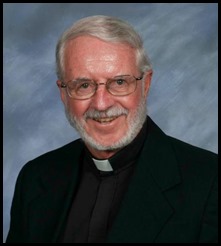
He was the longest resident of Regina Cleri, having been there for over 25 years. He was very beloved by all those at Regina Cleri, and many said what a wonderful companion he was to live with there. He will be sorely missed.
Of course, the next day, the Feast of the Immaculate Heart of Mary, we had the ordination of five new transitional deacons at the Cathedral of the Holy Cross: Maxwell Chukwudiebere, Patrick O’Connor, Bertrand Proulx, Nathaniel Sanders and Nicholas Stano. These men will be among the group ordained to the priesthood for the archdiocese next year.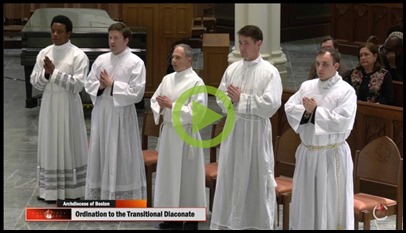
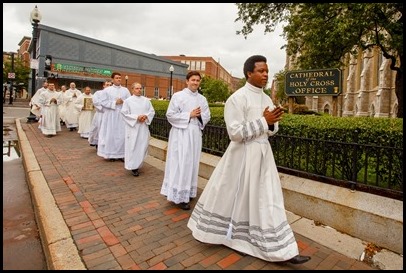
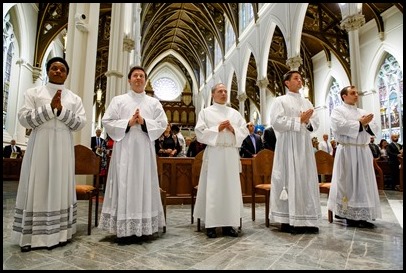
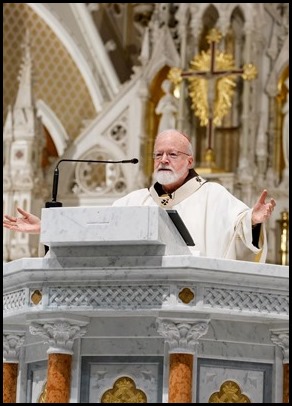
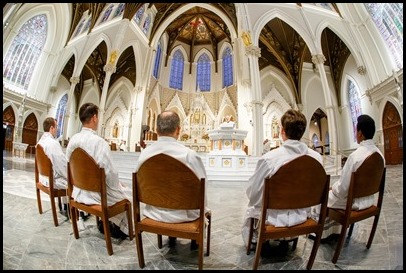
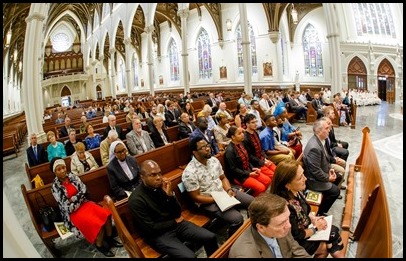
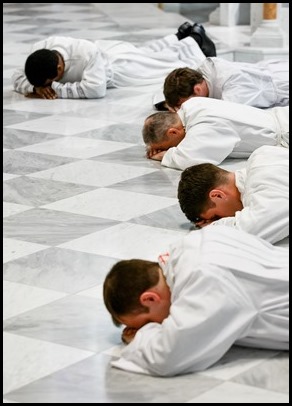
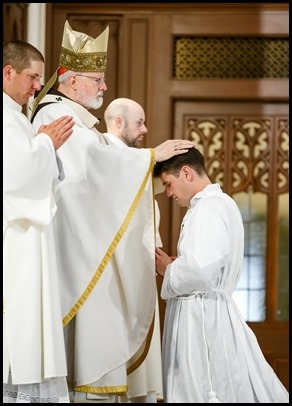
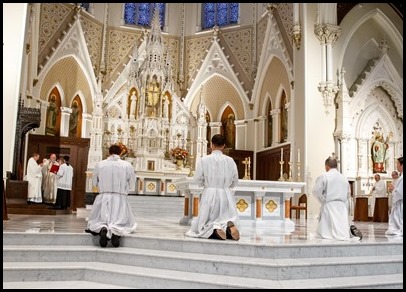
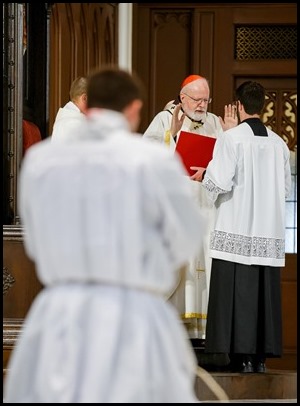
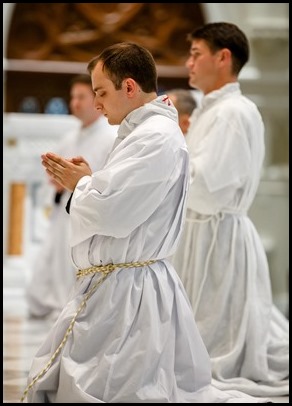
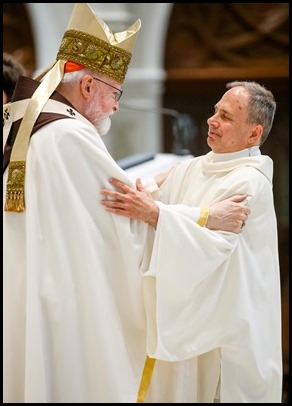
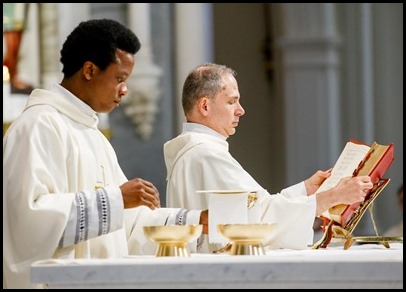
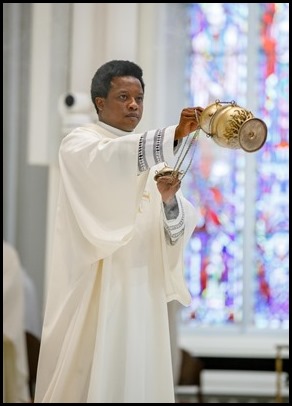
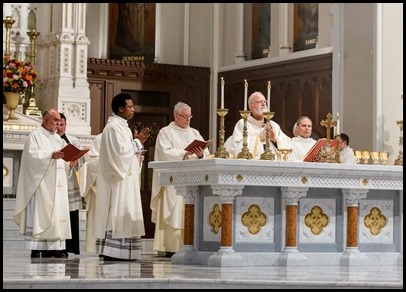
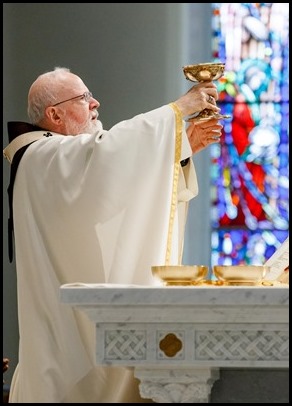
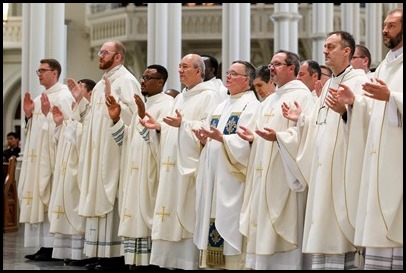
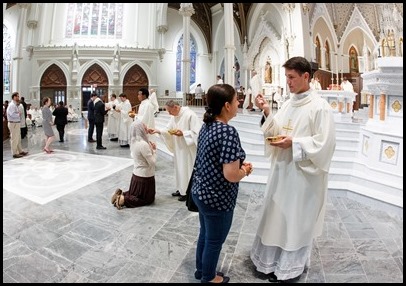
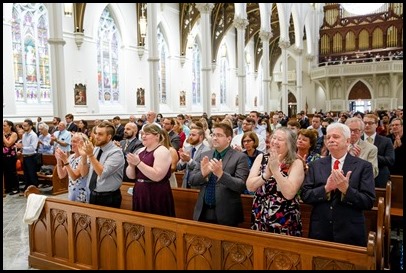
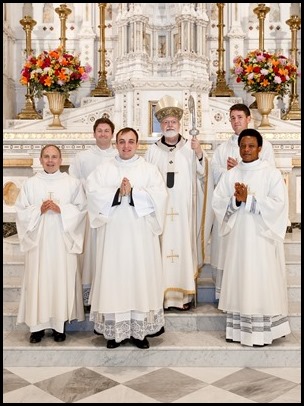
We were very blessed to have another ordination at the cathedral in such short order after the priesthood ordination in May, and it was a beautiful event.
Sunday, I went to St. Paul Parish in Hingham for a Mass to celebrate the 150th anniversary of the parish.
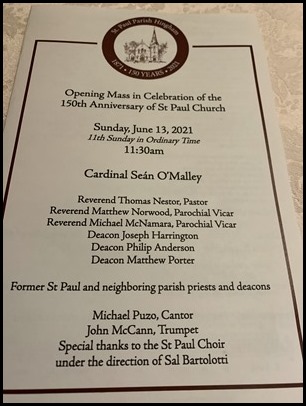 The history of the Church in Hingham is a very interesting one, and they have a wonderful history of the parish on the parish webpage. It’s one of the best I’ve ever seen. I told all the parishioners who hadn’t seen it that it was their assignment to log on and check it out.
The history of the Church in Hingham is a very interesting one, and they have a wonderful history of the parish on the parish webpage. It’s one of the best I’ve ever seen. I told all the parishioners who hadn’t seen it that it was their assignment to log on and check it out.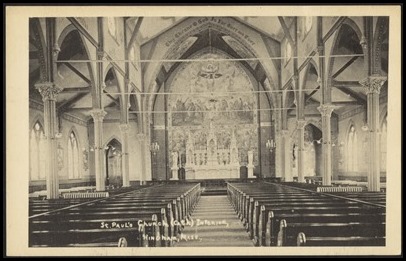
Of course, like a number of our parishes celebrating their sesquicentennials, the anniversary is a time to reflect on what it would have been like to be a Catholic in the archdiocese 150 years ago. It was the aftermath of the famine in Ireland that brought so many immigrants here shortly after the Civil War. People were experiencing many difficulties and hardships, and yet their faith led them to form these parish communities and build beautiful churches.
St. Paul Church was a creation of Patrick Keeley, the same architect who built the Cathedral of the Holy Cross along with about 700 other churches and about 20 cathedrals.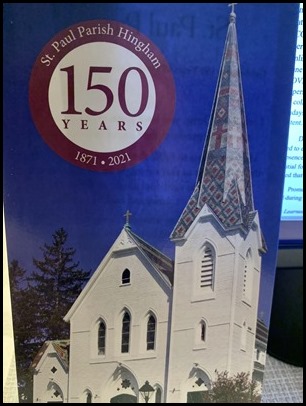
It was also very interesting to see how the school was formed with the support of the Knights of Columbus and the Sisters of St. Joseph. Of course, the school is still thriving.
It was a beautiful celebration, and we were joined by many priests who were from the parish, including Father Bill Joy, who went to school there. He told me he was there for the parish’s centennial celebration, and so I asked him to represent me at the bicentennial!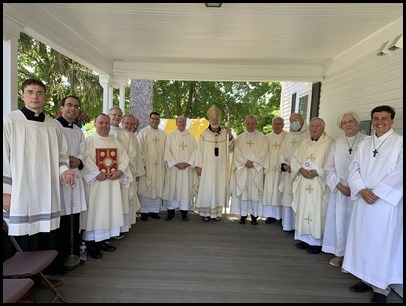
We were also happy that Father Jim Rafferty, who had been in the parish for so long, returned to be with us for the celebration.
I’d also like to share with you this picture of the stained-glass window in the lower church dedicated to the memory of Sister Tonya Santander, a Sister of Divine Providence from Peru. She had been the religious education director at the parish for many years but, sadly, in 2019, she died of cancer at the age of only 47. I thought it was very touching that the parish commemorated her that way.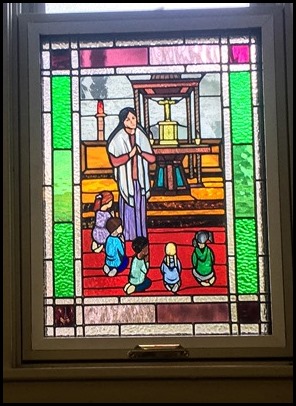
In preparation for our USCCB Spring Assembly later in the week, we had the meetings of the various bishops’ conference committees and subcommittees beginning on Monday.
On Monday, I participated in meetings of the subcommittees on the Church in Latin America and the Church in Africa. These are two subcommittees that receive project petitions from different Church organizations in their respective regions and distribute the funds that are raised through the special collections for Latin America and Africa.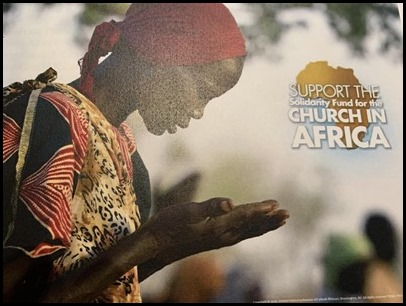
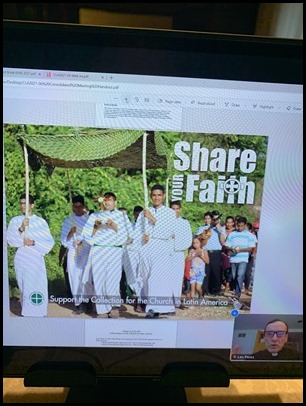
It is always very humbling to see the generosity of our people. Even in a time like the pandemic, these collections were supported and therefore able to do so much good in parts of the world where the need is so great.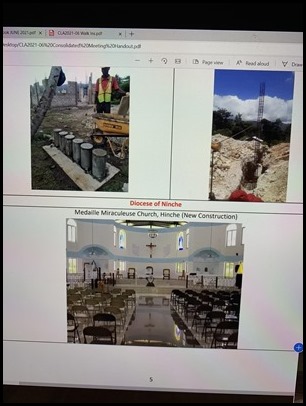
On Tuesday, we had the meetings of the Board of Directors of the Basilica of the National Shrine of the Immaculate Conception and the Committee on Migration.
The shrine, of course, had a very difficult year because of the pandemic restrictions, but they are bouncing back. They are initiating their confession and daily Mass schedules once again, and pilgrimages are returning to the shrine. At the same time, it was also amazing to realize how much they took advantage of television and live streaming to allow millions of people to be exposed to the liturgies at the shrine while in-person attendance was limited.
During the Migration Committee meeting, we heard a report on the migration summit that was recently held in Chicago. The gathering brought together several bishops from the U.S. and Latin America and representatives of international Catholic organizations to begin to plan how the Church can reach out to immigrants arriving to this country.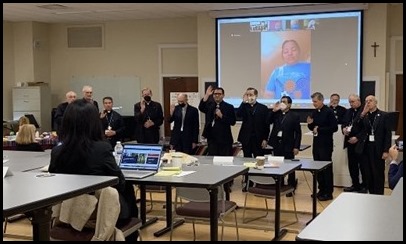
One key topic of discussion was the situation of unaccompanied children at the border. Sister Norma Pimentel, who received the Justice and Compassion Award from Catholic Charities of Boston last year, is a member of the committee, and she offered a great deal of insight into that issue.
Also, on Tuesday, I went to Brighton to attend the wake of Betty Danner, the sister of Msgr. George Carlson. They have had three deaths in the family in just the past month, and I was happy to be able to be there to express my condolences to Betty’s family and Msgr. Carlson.
Wednesday, we had a virtual meeting with several members of the Council of Cardinals advising the Holy Father on the reform of the Roman Curia in preparation for our meeting with the Holy Father, which is coming up on June 24.
Later that day, we began the plenary session of the USCCB Spring General Assembly, which ran through today.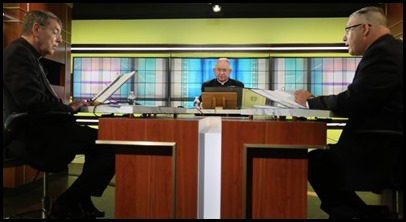
Among the agenda items were reports by the National Advisory Council and the National Review Board. They do wonderful work, and we are very blessed to have them.
Then, of course, a number of documents were considered, including the document on the Eucharist, which is the one that has certainly gotten the most attention.
There are many opinions as to what the document should encompass. I think, early on, there were some who envisioned the document as dealing with public figures and the reception of the Eucharist. However, in light of the instructions from the Holy See, the Committee on Doctrine has adjusted it to avoid focusing on categories of individuals but trying to develop a theological document around the Eucharist and the question of preparedness and Eucharistic consistency.
Thursday, I offered the opening prayer for the seminar “Developing A Culture of Healing – Promoting a Culturally Sensitive Approach to Listening and Responding to Those Who Have Been Abused,” sponsored by the Pontifical Commission for the Protection of Minors. One of our working groups, headed by Teresa Kettlekamp, was responsible for organizing this three-day meeting.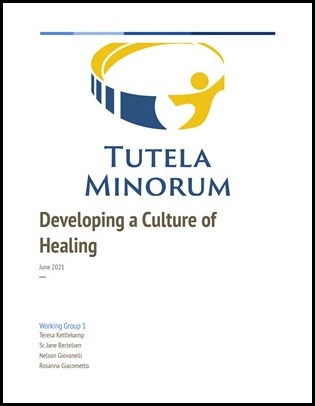
This was a gathering for victims-survivors of sexual abuse and those who are working with them and featured the former Archbishop of Dublin, Diarmuid Martin, among the speakers. It was impressive to see that they had participants from all over the world, and it was translated into several languages.
On Thursday, we also had a Zoom meeting with MC Sullivan, Deacon Paul Klein and Father Bryan Hehir to continue our discussions on The Bethlehem Project, our new initiative to address the problem of homelessness in our community.
It was very encouraging to hear how much enthusiasm there is for this new project. We were told that there are about 30 parishes already helping out at Pine Street Inn, which is just one indication of the many good things happening in our parishes with regard to outreach to the homeless. We certainly want to encourage these efforts, and we hope to have our first meeting of our expanded homelessness task force within the next couple of weeks.
Until next week,
Cardinal Seán
